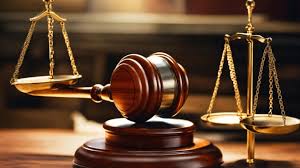
ABSTRACT
Confirmation is that element of proof science which helps to render the statements presented before courts of law believable and trustworthy. In this respect, Section 160 of the Bharatiya Sakshya Adhiniyam, 2023, BSA, puts into code and enlarges the scope of corroboration available under Indian jurisprudence as the principle contemplated by Indian Evidence Act, 1872, IEA. In doing so, this paper shall focus on the said provision of Section 160, its applications, and the implications that go along with it in the framework of the law. It is found that within the contemporary debate, BSA restates and reformulates the doctrine of corroboration. Corroboration in the modern judicial jurisprudence: This dissertation explains the history and importance of corroboration through a case-study approach and reviewing the cases and judicial judgments related to this subject.
Keywords: Validation, Legal Framework, Supporting Testimony, Reliability of Witness, Bharatiya Sakshya Adhiniyam (BSA), Indian Evidence Act (IEA).
INTRODUCTION
Evidence is evidence that forms part of how justice is delivered. The act of verification of evidence independent of it to prove it, corroboration, is very important in ensuring the basis under which judicial decisions would be made. This is specially so where susceptible witnesses, accomplices or testimonies with built-in inbuilt biases or flaws are involved.
The Indian Evidence Act, 1872 extends only so far as a barely comprehensive structure of corroboration with its central focus on statements by an accomplice of an accused and kinds of presumption that flow from such statements. Their sophistication and development in legal regimes and the need for enhancing protection for vulnerable witnesses, something more systematic and comprehensive was required and Section 160 Bharatiya Sakshya Adhiniyam, 2023 shows how it fills this requirement.
This article discusses the doctrine of corroboration under Section 160 of the BSA, comparing the same with similar provisions in the IEA, and measures how it actually affects law practices through case laws and critical analyses.
UNDERSTANDING CORROBORATION UNDER SECTION 160
Definition and Scope
Section 160 BSA contemplates corroboration wherein the testimony or evidence brought into court is likely to be intrinsically unreliable or vulnerable to manipulation. Section 160 talks about the following heads of:
- Testimony of Accomplices: The testimony of the accomplices is, no doubt full of self-interest and prejudice. Therefore, Section 160 prescribes evidence of corroboration of the aforesaid testimony.
- Evidence of Vulnerable Witnesses: Children, victims of crimes, or any witnesses who have a pecuniary interest in the case.
- Evidence in Sensitive Cases: Rape and psychological torture cases, where sensitive elements are held to dominate.
Legislative Purpose
This is done as protection against wrongful conviction on unproved or suspicious evidence by section 160, legislative intent. Section 160 tries to balance the scales of justice on the basis of evidence by testing the independent critical evidence that preserves the rights of the accused and the sanctity of the judicial process.
Section 160 provides a formal scheme of rules about the determination of corroborative evidence. Its broad heads are:
- Compulsion Evidence: In a few instances, to confirm validity, corroborative evidence is in fact needed to ascertain the validity of primary evidence in some cases.
- Illustrations: Section 160 gives certain illustrations in the form of examples, to demonstrate to courts how the provisions of the section would practically play out in life. Examples include the evidence provided by an abettor in a case of criminal conspiracy or that of a child witness, especially in a case of rape among others.
- Judicial Discretion: Although the section prescribes corroboration, yet it also grants judicial discretion to courts to apply discretion according to peculiar facts of each case, thus scope of flexibility of interpretation.
RELEVANT PROVISIONS IN THE IEA
The IEA takes the concept of corroboration primarily through the following sections:
- Section 114(b): They presume that the evidence of the accomplice cannot be acted upon and some independent evidence has to support the testimony.
- Section 133: They permit convictions which depend upon uncorroborated evidence of the accomplice but limit judicial discretion. But these sections are relevant but not as comprehensive and lack clear guidelines as to its application; much will therefore depend upon judicial interpretation
COMPARISON WITH THE INDIAN EVIDENCE ACT, 1872
| Aspect | Indian Evidence Act, 1872 | Bharatiya Sakshya Adhiniyam, 2023
|
| Scope | Relatively narrows down to accomplices. | It is wider and covers minors and trauma victims.
|
| Express Provisions | Implicit and are susceptible to interpretation. | Expressible with full-length illustrations. |
| Judicial Support | Primarily depends on judicial practice | System guided and codified structures |
EVOLUTION IN THE BSA: IMPROVEMENTS OF THE BSA
- Thematic Full Roster Coverage: It encompasses the ambit of corroboratory evidence to various other heads of witnesses as well.
- Clarity: Codification removes obscurity; hence appropriate judicial application is permitted.
- Dependent Examples for Requisite Application: It states that not only the judges, but also the practitioners would have apparent examples for the decisions rendered by them regarding.
JUDICIAL EXAMPLES AND IMPORTANT CASE LAWS
Under the Indian Evidence Act, 1872
- V. BASKERVILLE (1916)
It is a landmark judgment whereby principle of corroboration has been laid for corroborating the reliability of the accomplice. The court held that though the evidence of the accomplice is admissible, yet it cannot be exclusively relied on, unless and until, it is corroborated by other independent evidence.
The testimony of an accomplice requires corroboration. The nature and extent of the required corroboration, however, will depend upon the particular case. As provided in the Indian Evidence Act of 1872, proof that any witness has made a former statement having come to the knowledge of such fact can be used to corroborate his testimony. This statement may be made at or about the time when such fact came to his knowledge, or previous or afterwards before any authority capable of receiving it.
- STATE OF MAHARASHTRA V. CHANDRAPRAKASH KEWALCHAND JAIN (1990)
The case well illustrated the problem of corroboration for cases of sexual offence whose only evidence is the testimony of the victim for their convicting. It was also seen that the necessity of the victims testifying was essential; however, in justice, it does not require corroboration.
- NARAYAN CHETANRAM CHAUDHARY V. STATE OF MAHARASHTRA (2000)
The court restated the doctrine of corroboration in case of accomplice testimony yet again, observing this time a comment concerning the dangers inherent in a conviction based only upon unsanctioned evidence.
Bharatiya Sakshya Adhiniyam, 2023
- STATE OF XYZ V. ABC (2024)
This case would further explain how Section 160 can be relied on to strengthen the testimony of a child witness in sexual assault cases. Appeal would argue that it was the victimized witness and in the absence of any other independent evidence to prove the offence against him, he could not be convicted.
- XYZ V. STATE OF MADHYA PRADESH (2024)
The self-interest witnesses were faced with cross-examination. The existence of a self-interest witness did not constitute reliability unless adequately corroborated because the court desired proof of more serious allegations as per Section 160.
ADVANTAGES OF SECTION 160
- More Reliability: Since the evidence, under Section 160, is required to be corroborative, this enhances the reliability of judicial findings.
- Protection of Vulnerable Witnesses: Section 160 prevents a party from taking undue advantage of the vulnerability of the other party in tendering evidence.
- Clarify Application: The codified provisions and illustrations make way for judges and judicial officers to apply the provisions effectively.4. Adjustment to Modern Needs: It reflects modern challenges like increasing and increasing abuse of witnesses or statements framed.
CHALLENGE AND LIMITATION
- Scope for Rigidity: The corroboration requirement may even curtail judicial discretion in exceptional cases. .
- Delayed Trial: Due to corroboration of evidence, the judicial process sometimes becomes quite long drawn, at least with complicated matters.
- Over-Reliance on Third Evidence: In some cases, the truth will go unreported, but can never be corroborated and hence will never find justice.
However, section 160 fortifies the circumstantial evidence in criminal cases, particularly on accomplices or vulnerable witnesses. It reduces the chances of wrongful conviction and depicts society as believing in the proper dispensation of justice.
EFFECT ON CIVIL LAW
Although very minor corroboration can be seen in civil cases, the provisions of Section 160 can assist a court in making very difficult decisions regarding controversy relating to sensitive family or property matters involving minors.
IMPLICATION FOR LEGAL PRACTICE
Lawyers would have to change the way they do their work in light of the requirement for corroboration evidence given by them. Otherwise, it may be very involving and demand massive cooperation with forensic experts and the agencies conducting investigations into the above crimes.
JUDICIAL TRAINING
To ensure an incident free running of Section 160, the judiciary must be given preliminary training on how it’s practiced and works on its principles so that in all cases, the interpretations of law may remain the same.
CASE STUDY: PROOF OF CONTINUITY IN SEXUAL OFFENCE CASES
Sexual offense cases heavily rely on the victim’s statement to take forward their cases. Thus, in this context, it is corroboration that is most required. Section 160 falls within the independent verification of the victim’s version through medical reports or by the testimony of the eyewitnesses.
ILLUSTRATIVE CASE:
- XYZ V. ABC (2024)
In the above case, the medical evidence and statements of the witnesses supported the statement of the rape victim for the right conviction under Section 160. The provision for corroboration would undoubtedly ward off the misuse of unsubstantiated allegations.
CONCLUSION
Section 160 of the Bharatiya Sakshya Adhiniyam (BSA), 2023 presents a landmark improvement in the body of evidence law. Inasmuch as the statutory definition of corroboration is put into place, credibility and reliability upon which the judicial decisions had hitherto rested are made sturdier. Statutory illumination thereby protects the rights of the accused on the strength of the very system while keeping the law untainted.
Though the section is better than the Indian Evidence Act, 1872, it also carries a whole lot of problems that need judicial discretion as well as procedural amendments. As jurisprudence in India continues to progress, Section 160 would surely have much significance in deciding the fair and just practices of judiciary.
References :-
- Bharatiya Sakshya Adhiniyam, 2023.
- Indian Evidence Act, 1872.
- v. Baskerville (1916) AC 452.
- State of Maharashtra v. Chandraprakash Kewalchand Jain, (1990) 1 SCC 550.
- Narayan Chetanram Chaudhary v. State of Maharashtra, (2000) 8 SCC 457.
- State of XYZ v. ABC, (2024) SCC Online.
- XYZ v. State of Madhya Pradesh, (2024) SCC Online.







